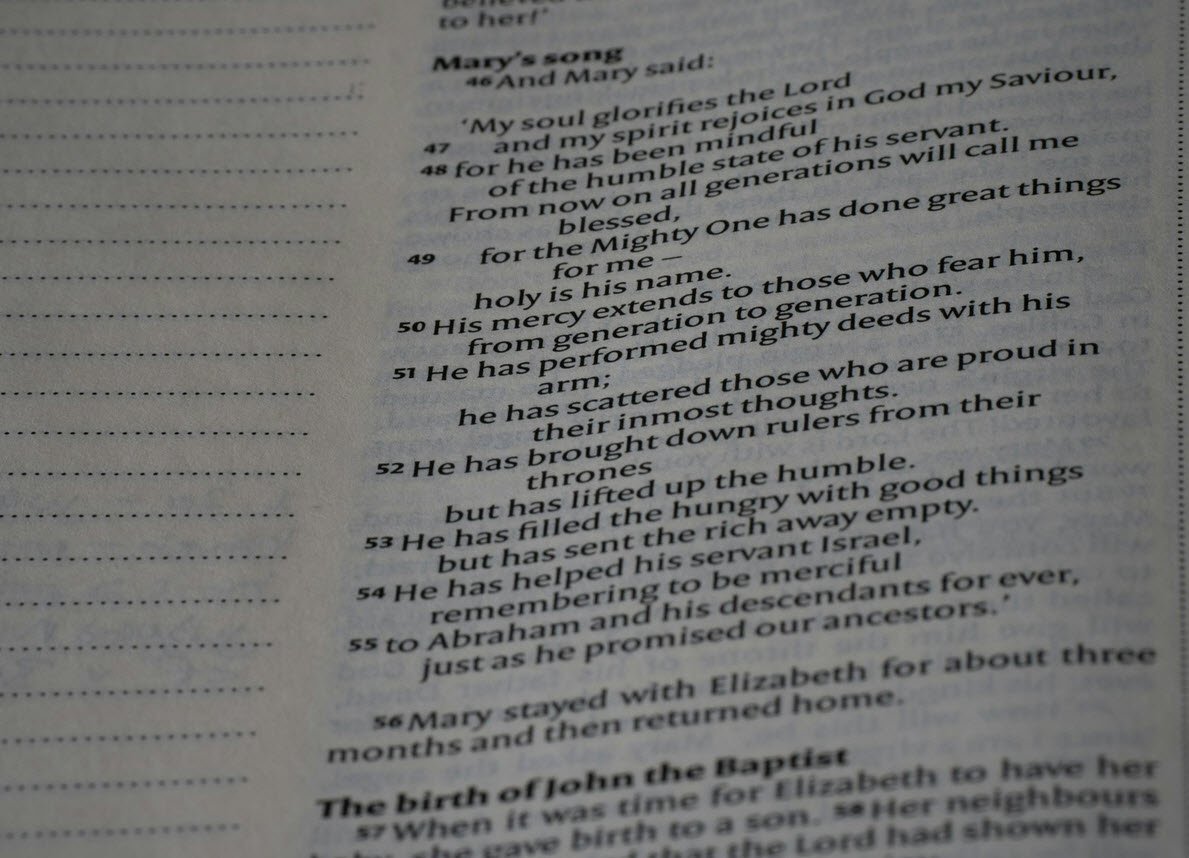
English grammar is the set of structural rules of the English language. This includes the structure of words, phrases, clauses, sentences, and whole texts.
Also Read:
- 50 Daily Used English Sentences to Improve Your Communication Skills
- 10 Body Language Tips to Make a Great First Impression in Interviews
- 15 Common Grammar Mistakes and How to Avoid Them
- How to Write a Professional Email in English
- The Best Action Words to Use in Your Resume
- The Most Useful English Idioms & Their Meanings
- Historical Highlights – Complete With Words
- The Seven Types of Pronouns and Their Uses
- 200 Essential Questions for Practicing One-Word Prepositions (With Answers)
- Understanding Nouns – The Five Types and Their Uses
Acronym
A word formed from the initial letters of other words, e.g. AIDS (acquired immune deficiency syndrome).
Adjective
Adjectives express a quality or attribute of a noun: a happy child; a violent storm; an old car. Adjectives can also appear after the noun: the child is happy.
Adjective phrase
A phrase in which the main word is an adjective. The adjective may occur on its own in the phrase (happy, old, rich), or it may have a premodifier before it (very happy, quite old, extremely rich). Some adjective phrases may also have postmodifiers after the adjective (tired of waiting, happy to meet you).
Adjunct
A grammatically optional element in sentence structure. Adjuncts convey optional, additional information, including when something happened (Our guests arrived on Sunday.), where something happened (We met Paul outside the cinema.) and why something happened (Amy cried because she lost her doll.).
Adjunct clause
A subordinate clause which functions as an adjunct in sentence structure: Amy cried because she lost her doll; Although he is poor, he gives what he can to charity.
Adverb
Adverbs are used to modify a verb (Amy sings beautifully), an adjective (extremely big), or another adverb (very recently).
Adverb phrase
A phrase in which the main word is an adverb. The adverb may occur on its own (beautifully, recently), or it may have a premodifier before it (very beautifully, quite recently).
Alternative interrogative
A question which offers two or more alternative responses: Do you want tea or coffee?; Is that William or Harry?
Anaphora
The use of a word or words to refer back to something previously mentioned. The personal pronouns are often used anaphorically, as in James likes football. He never misses a game.
Antecedent
A word or words to which a following word refers back.
Apposition
A relationship between two units (usually noun phrases), in which both units refer to the same person or thing: The President, Mr Brown.
Article
The articles are the (the definite article) and a/an (the indefinite article).
Aspect
Aspect expresses how an event is viewed with respect to time. There are two aspects in English, the progressive aspect (William is leaving/was leaving) and the perfective aspect (William has left/had left).
Asyndetic coordination
Coordination without the use of and: We need bread, cheese, eggs, milk, flour.
Auxiliary verb
A ‘helping’ verb which typically comes before the main verb in a sentence (I can drive; James has written to the Council.). Auxiliary verbs are divided into the following types: modal, passive, progressive, perfective, do auxiliary, semi-auxiliary.
Back formation
A verb formed by removing a noun ending, and adding a verb ending, e.g. televise, from television.
Base form
The form of a verb which follows to, and to which the inflections are added: to walk, walk+s, walk+ed, walk+ing.
Case
A distinction chiefly in pronouns which relates to their grammatical functions. Personal pronouns and the pronoun who have two cases: subjective case (e.g. I, we, who) and objective case (me, us, whom). Nouns exhibit two cases, the common case (dog, dogs) and the genitive case (dog’s, dogs’).
Cataphora
The use of a word or words to refer forward to a later word: When you see him, will you ask Simon to phone me?
Clause
A sentence-like construction which operates at a level lower than a sentence.
Cleft sentence
A sentence with the pattern It + be + focus + relative clause, e.g. It was William who noticed the error. (cf. William noticed the error.). Cleft sentences are used to emphasize the focus, here, William.
Clipping
A type of abbreviation in which one or more syllables are omitted from a word, e.g. demo, from demonstration.
Comment clause
A peripheral clause in sentence structure, used to offer a comment on what is being said: I can’t afford it, I’m afraid.
Comparative clause
Comparative clauses are introduced by than, and express comparison: The play was better than I expected; David is stronger than he used to be.
Complement
A unit which completes the meaning of a word, e.g., a noun (the fact that the earth is round), or a preposition (under the table). The term is also applied to the unit which completes the meaning of a transitive verb (The soldiers destroyed the village.).
Complex sentence
A sentence which contains one or more subordinate clauses: The match was abandoned because the pitch was waterlogged; The referee decided to abandon the match.
Compound sentence
A sentence which consists of two or more clauses linked by a coordinating conjunction (and, but, or): Emily works during the day and she studies at night.
Concord
Another term for subject–verb agreement.
Conditional clause
A conditional clause is typically introduced by if, and expresses a condition: If we get home early we can watch the new video.
Conjunction
The coordinating conjunctions (and, but, or) link elements of equal status (I play guitar and David sings.). The subordinating conjunctions (e.g. if, because, since) introduce a subordinate clause: (Have some pasta if you want it.).
Coordination
The linking of two or more units using one of the coordinating conjunctions and, but and or: We bought meat and vegetables; David graduated last year but he still can’t find a job; You don’t need money or good looks.
Countable noun
Countable nouns denote things that can be counted: one chair, two chairs, three chairs, etc. Therefore they have both a singular form (chair) and a plural form (chairs). Also called count nouns.
Declarative sentence
A sentence which is chiefly used for making a statement: The sky was blue; William became an engineer; The government has a huge majority.
Definite article
The definite article is the word the.
Demonstrative pronoun
The demonstrative pronouns are this, that, these and those.
Determiner
Determiners are elements in the structure of a noun phrase. They introduce the noun phrase: the computer; a newspaper; some people; many problems; three ships; all our friends.
Direct object
The element required by a transitive verb to complete its meaning: David announced his retirement; The company made a huge profit. Direct objects are most commonly noun phrases, but they can also be clauses: David announced that he will retire.
Direct speech
A method of reporting speech in which the actual words that were used are quoted: ‘I’m very tired’, said James.
Do auxiliary
The do auxiliary is used (a) to form questions (Do you like French films?) (b) to form negatives, with not (I do not enjoy violent films.), (c) to form negative directives, with not (Do not sit there!) (d) for emphasis (I do enjoy a good book!).
Etymology
The study of the origin and history of words.
Exclamative sentence
A sentence that expresses an exclamation: What a pity!; How tall he’s grown!
Finite
If the first (or only) verb in a verb phrase exhibits tense (past or present), then the verb phrase is finite. The following sentences all contain a finite verb phrase: David left early; David leaves at eight every morning; David is leaving now; David had left. The term is also applied to clauses in which the verb phrase is finite.
Form
In grammatical descriptions, the term form refers to the structure, appearance, or ‘shape’ of an element. For instance, we say that the adjective old has three forms, old, older, oldest.
Fragment
An incomplete sentence, often used in response to a question: Where did you leave the keys? On the table. Fragments are interpreted as complete sentences: I left the keys on the table.
Function
The grammatical role that an element performs in a sentence, clause, or phrase. For instance, in The old man is ill, the element the old man (a noun phrase) performs the function of subject. In turn, the adjective old performs the function of premodifier in the noun phrase the old man.
Gradable
A term used to describe adjectives and adverbs which can be modified by an intensifier: fairly cold; very cold; extremely cold, and have comparative and superlative forms: old, older, oldest.
Imperative sentence
A type of sentence used in giving orders: Move over, Come in, Don’t leave your coat there.
Indefinite article
The indefinite article is a/an.
Indirect object
Some transitive verbs require two elements to complete their meaning: We gave James a gift. Here, James is the indirect object, and a gift is the direct object. The indirect object typically refers to the person who receives something or benefits from the action.
Indirect speech
Indirect speech reports what has been said, but not in the actual words used by the speaker: James said that he was very tired. Compare: ‘I’m very tired’, said James, which is direct speech.
Infinitive
The base form of a verb when it is introduced by to: She loves to sing; They decided to cooperate.
Inflection
An ending which indicates a grammatical category. For instance, the -s ending added to a noun indicates plural number.
Intensifier
A type of adverb used to express degree in an adjective or in another adverb. The most common intensifier is very: very cold; very recently. Other intensifiers include extremely, fairly, highly, quite.
Interrogative sentence
A type of sentence used in asking questions: Is James here? Did you have a good time? What is this? How is the patient?
Intransitive verb
A verb which requires no other element to complete its meaning: David yawned; It is still snowing.
Linking verb
The most common linking verb is be: My uncle is a professional footballer. Linking verbs link the subject (my uncle) with the subject complement (a professional footballer). Other linking verbs include seem (He seems angry.) and appear (She appears distracted.).
Main clause
A clause which can stand independently. In Emily worked in Greece when she was young, the main clause is Emily worked in Greece. The second clause, when she was young, can be omitted, and is a subordinate clause.
Main verb
In the verb phrase was raining, raining is the main verb, while was is the auxiliary verb.
Mass noun
Another term for uncountable noun.
Modal auxiliary
The modal auxiliary verbs are can, could, may, might, must, shall, should, will, would.
Mood
A grammatical category which indicates the attitude of the speaker to what is said. English has three moods: indicative, imperative, subjunctive.
Morphology
The study of the structure of words.
Multi-word verb
A combination consisting of a verb and one or two other words, acting as a unit. Multi-word verbs include prepositional verbs (look at, rely on), phrasal verbs (give in, take over), and phrasal-prepositional verbs (look forward to, put up with).
Nominal relative clause
A subordinate clause introduced by what, whatever, whoever, where: What you need is a long holiday; I can’t understand what he is saying; I’ll speak to whoever is responsible.
Non-finite
If the first (or only) verb in a verb phrase has the base form (Simon is reluctant to make an effort.), the -ing form (Working hard brings its own reward.) or the -ed form (Published in 1998, it soon became a bestseller.), then the verb phrase is non-finite. The term is also used to describe a clause containing a non-finite verb phrase.
Non-restrictive relative
A ‘non-defining’ relative clause, which simply adds information: The passenger, who was about 20, was not injured. Compare the ‘defining’ restrictive relative clause: The passenger who was in the rear seat was not injured.
Non-sentence
An independent unit which has no sentence structure. Non-sentences are commonly used in public signs and notices: Exit, No Entry, 10% Off.
Noun
Common nouns are the names of objects (book, computer), people (boy, father), states (loneliness, happiness), abstract concepts (history, honesty), etc. Proper nouns refer to individual people (Nelson Mandela, Winston Churchill), places (London, Hong Kong), and geographical features (Ben Nevis, River Thames).
Noun phrase
A phrase in which the main word is a noun. The noun may occur on its own (children, water), or it may have a premodifier before it (young children, cold water). A noun phrase may also contain a postmodifier after the noun (children with learning disabilities, cold water from the stream). A noun phrase may be introduced by a determiner (the children, some water).
Number contrast
The contrast between singular and plural, e.g. dog/dogs, woman/women, this/these.
Object complement
A sentence element which denotes an attribute of the object. For instance, in The dye turned the water blue, blue denotes the colour of the water (the object), so blue is the object complement.
Objective case
The objective case of a personal pronoun is used when the pronoun is a direct object (Simon met me.) or an indirect object (Simon bought me a ticket.). It is also used after a preposition (Simon bought a ticket for me.).
Parenthetical
A complete sentence inserted in another sentence: The merger – this is confidential – will go ahead as planned.
Participial adjective
An adjective with an -ed ending (a dedicated worker) or an -ing ending (a surprising result).
Participle
The -ed and -ing forms of a verb. In some grammars, these are called the -ed participle (or past participle) and the -ing participle (or present participle).
Perfective auxiliary
The perfective auxiliary is have. It occurs before the -ed form of a main verb: Simon has arrived; We had hoped you could come.
Personal pronoun
The personal pronouns are I/me, you, he/him, she/her, it, we/us, they/them.
Polysyndetic coordination
Coordination in which and or or is used between each pair of coordinated items: The lecture went on and on and on; You can have pasta or meatloaf or salad.
Possessive pronoun
The possessive pronouns are my/mine, your/yours, his, her/hers, its, our/ours, their/theirs.
Predicate
Everything in a sentence excluding the subject: David (subject) won a scholarship (predicate).
Prefix
A sequence of letters, such as un- (unlawful), anti- (anti-abortion), post- (post-war) added to the beginning of a word to form a new word.
Preposition
Common prepositions include after, at, before, beside, for, in, of, under, with. Prepositions are used to introduce a noun phrase: after the ballet; at the supermarket; before breakfast.
Prepositional complement
The element (usually a noun phrase) which is introduced by a preposition: after the ballet; under our roof, in New York, at ten o’clock.
Prepositional phrase
A phrase which is introduced by a preposition. The preposition is followed by a prepositional complement, which is usually a noun phrase: after the ballet; under our roof; in New York; at ten o’clock.
Progressive auxiliary
The progressive auxiliary be occurs before a main verb with -ing form: I am organising a trip to Paris; Paul is collecting money for charity; The children were shouting.
Pronoun
Pronouns are divided into the following main classes: demonstrative, personal, possessive, reflexive.
Reduced relative clause
A relative clause in which the relative pronoun is omitted, and the verb has -ed form or -ing form: Films produced on a small budget are rarely successful (compare: Films which are produced on a small budget); The man standing beside you is my uncle (compare: The man who is standing beside you).
Reflexive pronoun
The reflexive pronouns are myself, yourself, himself, herself, itself, ourselves, yourselves, themselves.
Relative clause
A relative clause is introduced by a relative pronoun such as who, which, or that: The man who lives beside us is unwell; It’s a new company which specializes in web design; The project that I’m working on is really interesting.
Relative pronoun
The relative pronouns are who (m), whose, which, and that. They are used to introduce a relative clause: The man who lives beside us is unwell.
Reporting clause
A clause such as he said, or said Mary, which identifies the speaker of direct speech: ‘I’m leaving now,’ he said.
Restrictive relative clause
A defining relative clause, which identifies the noun preceding it: The passenger who was in the rear seat was not injured.
Semantics
The study of the relationship between linguistic forms and meaning.
Semi-auxiliary
A multi-word auxiliary verb. Examples include have to (I had to catch a bus.), be going to (He’s going to fall.) and be about to (The factory is about to close.).
Sentential relative clause
A relative clause which expresses a comment on what has previously been said: Amy can’t come this evening, which is a pity.
Simple sentence
A sentence which contains no subordinate clause.
Subject
The sentence element that typically comes before the verb in a declarative sentence: James (S) is (V) still at school. In an interrogative sentence, the subject and the verb change places with each other: Is (V) James (S) still at school?
Subject complement
The sentence element that completes the meaning of a linking verb (usually be): Paul is my nephew; Our house is too small; The weather was beautiful.
Subjective case
The subjective case of a personal pronoun is used when the pronoun acts as subject: I met Simon, in contrast with the objective case: Simon met me.
Subject–verb agreement
A term used to denote the fact that a verb form agrees in number (singular or plural) with its subject (compare: The dog barks./The dogs bark.). Subject–verb agreement applies only to present tense verbs. Also known as concord.
Subjunctive
A term used to denote sentences which express a hypothetical or nonfactual situation: If I were you, I would invest the money; The Report recommended that the police officers be suspended immediately.
Subordinate clause
A dependent clause within a larger structure (John said that Mary is leaving.). Here, the subordinate clause is introduced by the subordinating conjunction that.
Subordinating conjunction
A word which introduces a subordinate clause. Common subordinating conjunctions include: although, because, if, since, that, when, while. Multiword subordinating conjunctions include as long as, as though, provided that, rather than.
Subordination
A relationship between two clauses in which one clause is grammatically dependent on the other. Subordination is often overtly indicated by the use of a subordinating conjunction: William studied architecture while he was in Germany.
Suffix
An ending added to a word to create another word. Noun suffixes include-ness (coolness, kindness), and -ism (capitalism, optimism). Adjective suffixes include -able (profitable, reasonable) and -al (accidental, musical). Syndetic coordination Coordination using and, but, or or: Paul and Amy; tired but happy; tea or coffee.
Syntax
The study of the arrangement of words in a sentence.
Tag question
A question which is appended to a statement: You went to Harvard, didn’t you?; You’re not leaving, are you?
Tense
There are two tenses in English: the past tense and the present tense. Tense is denoted by the form of the verb: David walks to school (present tense); David walked to school (past tense).
That-clause
A subordinate clause introduced by the subordinating conjunction that: Everyone knows that smoking is dangerous.
There-sentence
A sentence introduced by there, followed, usually, by the verb be: There is a fly in my soup; There is something wrong with the printer. Also called an existential sentence.
Transitive verb
A verb which requires another element to complete its meaning: Paul makes model airplanes; David bought a boat.
Uncountable noun
A noun which denotes things which are considered as indivisible wholes (furniture, mud, software) and therefore cannot be counted (*two furnitures, *three muds, *four softwares, etc.). Uncountable nouns have a singular form (software), but no plural form (*softwares).
Verb
Verbs are divided into two types: (a) main verbs, such as break, buy, eat, sing, write and (b) auxiliary verbs such as can, could, may, must, might, shall, should, will, would.
Verb phrase
A phrase in which the main word is a verb. The verb may occur on its own (walked, sings), or it may be preceded by one or more auxiliary verbs (has walked, can walk, has been singing).
Verbless clause
A subordinate clause which lacks a main verb: Though poor, he gives what he can to charity.
Voice
A term used to describe the contrast between an active sentence: The police arrested the suspect; and a passive sentence: The suspect was arrested (by the police).
Wh-interrogative
A question introduced by who, what, where, when or how: Who was at the door?; What would you like to drink?; Where are my keys?; When is your flight?; How do you switch it on?
Yes–no interrogative
A question which normally expects an answer which is either yes or no: Did you enjoy the film? – Yes/No.
Zero relative clause
A relative clause which is not introduced by a relative pronoun: This is the book William recommended.
Zero subordinate clause
A subordinate clause from which the subordinating conjunction that has been omitted: He must think I’m a fool.








